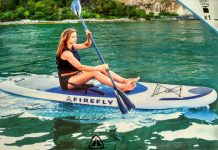Are you ready to become a waterskiing pro? Look no further as we bring you a comprehensive guide filled with expert techniques and tips to master the thrilling sport of waterskiing. From the basics of balance and body positioning, to advanced maneuvers like slalom skiing and jumps, we’ve got you covered. So grab your skis, buckle up, and get ready to ride the waves like a true waterskiing master!
Mastering Basic Waterskiing Techniques
Waterskiing is a thrilling and exhilarating water sport that can be enjoyed by people of all ages and skill levels. Whether you’re a beginner or have some experience in waterskiing, mastering the basic techniques is essential to your enjoyment and success on the water. In this article, we will guide you through the fundamental skills and techniques that will help you become a confident and skilled waterskier.
1. Proper Equipment and Gear
Before hitting the water, it’s important to ensure that you have the right equipment and gear for waterskiing. This includes a well-fitted life jacket or personal flotation device (PFD) that is Coast Guard approved to keep you safe in the water. Additionally, you will need a waterski rope and handle that are designed specifically for waterskiing. The type of skis you choose will depend on your skill level, but generally, beginners should opt for wider skis with more surface area to provide stability and easier control.
2. Getting Started on the Water
Once you have your equipment ready, it’s time to get started on the water. Find a calm and spacious area that is free from obstacles and other water users. Begin by sitting on the edge of the boat with your skis on and the rope between your legs. As the boat starts to move, lean back and gradually straighten your legs to bring yourself up to a standing position. Keep your arms straight and grip the handle firmly as the boat pulls you forward. It’s important to maintain a steady and balanced stance as you start moving on the water.
3. Body Position and Balance
Maintaining the correct body position and balance is crucial to your success in waterskiing. Keep your knees slightly bent and your weight distributed evenly between both skis. Shift your weight forward to maintain balance and prevent leaning back, which can cause you to lose control. Your head and upper body should be facing forward, allowing you to anticipate any changes in direction. As you gain more confidence, you can start experimenting with different body positions to improve your control and maneuverability.
4. Slalom Skiing Techniques
Slalom skiing, also known as single skiing, involves skiing on a single ski instead of two. This requires a higher level of skill and balance. To perform slalom skiing, start by positioning one foot in front of the other and leaning slightly forward. Shift your weight to the front foot and maintain a straight line from your head to your leading foot. As you gain speed, gradually transfer your weight to your rear foot to lift the leading foot off the water. With practice, you’ll be able to make smooth turns and navigate the water with precision.
5. Jumping Techniques
Jumping is an advanced technique in waterskiing that requires practice and skill. To execute a successful jump, start by building up speed and maintaining a straight path on the water. As you approach the jump, crouch down slightly and extend your legs at the last moment to propel yourself into the air. Keep your arms straight and use them to maintain balance and control. As you land, absorb the impact by bending your knees and leaning forward. With practice, you can gradually increase the height and distance of your jumps.
6. Tricks and Styling
Once you have mastered the basic techniques of waterskiing, you can start exploring more advanced tricks and styling to enhance your performance. These can include spins, flips, and grabs, which require a combination of skill, agility, and creativity. Practice these tricks in a controlled and safe environment, and always wear proper safety gear to protect yourself from any potential injuries. Remember to start with simpler tricks and gradually progress to more complex maneuvers as you gain confidence and experience.
Perfecting Turns and Jumps
After mastering the basic techniques, it’s time to focus on perfecting your turns and jumps. These skills will allow you to navigate the water with ease and perform more advanced maneuvers. Let’s dive deeper into the techniques involved in perfecting turns and jumps.
1. Carving Turns
Carving turns are essential for changing direction while maintaining control and speed. To execute a carving turn, shift your weight slightly to the outside edge of the ski you want to turn. Lean your body in the direction of the turn and apply pressure on the outer edge of the ski. The more pressure you apply, the sharper your turn will be. Engage your core muscles and use your hips to initiate the turn, maintaining a stable and balanced position throughout. As you progress, practice carving turns in both directions to improve your overall control and coordination.
2. Deep Water Starts
Deep water starts are necessary when you fall or want to start skiing in deeper water. To perform a deep water start, position yourself in the water with your skis on and hold the rope handle between your legs. Tuck your knees to your chest, keeping your elbows on the inside of your knees. When ready, signal the boat driver to start slowly, and as the boat starts moving forward, push your feet downward to bring yourself to a standing position. Maintain a solid grip on the handle and hold your body tall and aligned. Practice deep water starts to build confidence and effectively recover from falls.
3. Slalom Course Navigation
If you’re interested in competitive waterskiing, learning to navigate the slalom course is essential. The slalom course consists of a series of buoys that skiers must navigate to complete the course successfully. To navigate the slalom course, start by approaching the first buoy with a wide arc. As you initiate the turn around the buoy, keep your body balanced and shift your weight to the outside edge of the ski. Maintain a smooth and controlled rhythm throughout the course, making sure to clear each buoy on the correct side. Practicing slalom course navigation will improve your timing, precision, and overall performance.
4. Jumping Techniques and Heights
Jumping is a thrilling aspect of waterskiing that adds an element of excitement and skill. To improve your jumping technique, practice building up speed and maintaining a consistent trajectory. Approach the ramp with a slight crouch and extend your legs at the last moment to generate upward momentum. As you leave the ramp, keep your body compact and your arms straight to maintain balance and control. As you progress, challenge yourself to increase the height and distance of your jumps. Always prioritize safety and follow any regulations or guidelines set by your local skiing community.
Advanced Techniques and Skills
Once you have mastered the basic and intermediate techniques of waterskiing, you can begin exploring more advanced skills and techniques. These will allow you to push your limits and further enhance your performance on the water. Let’s take a closer look at some advanced techniques and skills in waterskiing.
1. Mastering Handle Control and Grip
Handle control and grip are crucial for maintaining stability and control while skiing. To master handle control, ensure that your grip is strong and firm on the handle, gripping it tightly with both hands. Your elbows should be slightly bent, and your arms should be positioned in front of your body. Avoid pulling the handle towards your body or allowing it to slack, as this can disrupt your balance and control. Practice various grips, such as handle passes and one-handed grips, to improve your handle control skills and add diversity to your skiing repertoire.
2. Achieving Maximum Speed and Control
As an advanced skier, maximizing your speed and control on the water is essential for pushing the boundaries of your abilities. To achieve maximum speed, focus on maintaining a strong and athletic stance with your weight distributed evenly between both skis. Engage your core muscles and use your hips to generate power and acceleration. Additionally, proper body positioning and weight distribution during turns and jumps will help you maintain control and stability at high speeds. Practice drills and exercises specifically designed to improve your speed and control, such as slalom drills and interval training, to enhance your overall performance.
3. Performing Advanced Tricks
Once you have honed your foundational skills, you can start exploring advanced tricks and maneuvers to showcase your talent and creativity on the water. Advanced tricks can include flips, spins, inverted tricks, and various grabs. These tricks require a combination of technical skill, strength, and body control. Start by mastering the basics of each trick individually and gradually progress to more complex combinations. Always practice these tricks in a controlled environment and under the supervision of experienced skiers. Safety should always be a priority, so be sure to wear appropriate safety gear and consider using a spotter when attempting more challenging maneuvers.
4. Navigating Challenging Water Conditions
As an advanced skier, you may encounter various challenging water conditions, such as strong currents, choppy waters, or windy weather. Navigating these conditions requires adaptability and careful attention to safety. When skiing in strong currents or choppy waters, maintain a more stable and balanced stance with slightly bent knees to absorb the impact of the waves. Adjust your speed and technique accordingly to maintain control and safety. In windy conditions, be mindful of gusts and sudden changes in direction, and adjust your speed and technique to compensate for the wind. Always prioritize your safety and consider the conditions before heading out on the water.
Safety Measures and Precautions
Waterskiing is an exhilarating and enjoyable activity, but it’s essential to prioritize safety to ensure a fun and accident-free experience. Here are some important safety measures and precautions to keep in mind while waterskiing:
1. Choosing the Right Skiing Location
When selecting a location for waterskiing, choose areas that are designated for water sports and have sufficient space for skiing safely. Avoid areas with heavy boat traffic, rocks, or other potential hazards. Familiarize yourself with local regulations and guidelines, and always adhere to any boating or watercraft restrictions in place.
2. Wearing Proper Safety Gear
Always wear appropriate safety gear, including a well-fitted life jacket or personal flotation device (PFD) that is Coast Guard approved. Ensure that the PFD provides proper buoyancy and allows for freedom of movement. Additionally, consider wearing a helmet to protect your head from any potential impact during falls or collisions.
3. Understanding Hand Signals
Effective communication between the skier and the boat driver is crucial for safe waterskiing. Learn and understand the hand signals commonly used to communicate with the boat driver, such as the “thumbs up” for increasing speed, “thumbs down” for slowing down, and “tapping the head” for immediate stop. Clear and concise communication will help you and your boat driver stay in sync and ensure a safe and enjoyable experience.
4. Knowing and Following Boating Rules
Familiarize yourself with the boating rules and regulations in your area. Understand the right of way and yield to other water users, such as swimmers, kayakers, and other boats. Respect any speed limits or wake restrictions in place and maintain a safe distance from other skiers or boats to avoid collisions. Always exercise caution and courtesy on the water.
5. Being Mindful of Other Water Users
In addition to following boating rules, it is essential to be mindful of other water users and respect their space. Avoid skiing too close to shore or in areas where swimmers are present. Always be aware of your surroundings and adjust your skiing path and speed accordingly. By being considerate and respectful of others, you help create a safer and more enjoyable environment for everyone on the water.
By following these tips and mastering the techniques outlined in this article, you’ll be well on your way to becoming a skilled and confident waterskier. Remember to always prioritize safety, continue practicing and refining your skills, and most importantly, have fun out on the water!





































